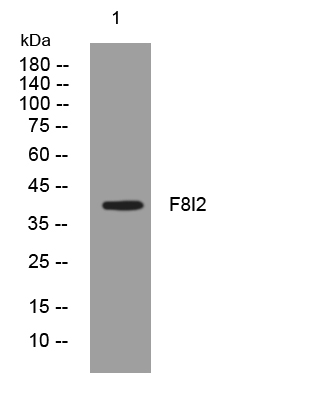- Home
- About
- Promotions
-
Products
-
Elisa Kits
- |
-
Primary antibodies
- |
-
Secondary antibodies
- |
-
Proteins
- |
-
IHC reagents
- |
-
WB reagents
- PonceauS Staining Solution
- PBST Washing Buffer, 10X
- 1.5M Tris-HCl Buffer, pH8.8
- 1M Tris-HCl Buffer, pH6.8
- 10% SDS Solution
- Prestained Protein Marker
- TBST Washing Buffer, 10X
- SDS PAGE Loading Buffer, 5X
- Stripping Buffered Solution
- Tris Buffer, pH7.4, 10X
- Total Protein Extraction Kit
- Running Buffer, 10X
- Transfer Buffer, 10X
- 30% Acr-Bis(29:1) Solution
- Tris电泳液速溶颗粒
- PBS(1X, premixed powder)
- TBS(1X, premixed powder)
- 快速封闭液
- 转膜液速溶颗粒
- Chemical reagents
- News
- Distributor
- Resources
- Contact
- Home
- >
- Info
- >
- F8I2 rabbit pAb
- >
- Go Back
F8I2 rabbit pAb
- Catalog No.:YT6594
- Applications:WB
- Reactivity:Human;Mouse
- Gene Name:
- F8A1 F8A; F8A2 F8A; F8A3 F8A
- Immunogen:
- Synthesized peptide derived from human F8I2 AA range: 33-83
- Specificity:
- This antibody detects endogenous levels of F8I2 at Human/Mouse
- Formulation:
- Liquid in PBS containing 50% glycerol, 0.5% BSA and 0.02% sodium azide.
- Source:
- Polyclonal, Rabbit,IgG
- Purification:
- The antibody was affinity-purified from rabbit antiserum by affinity-chromatography using epitope-specific immunogen.
- Storage Stability:
- -15°C to -25°C/1 year(Do not lower than -25°C)
- Molecular Weight(Da):
- 41kD
- Background:
- This gene is contained entirely within intron 22 of the factor VIII gene; spans less than 2 kb, and is transcribed in the direction opposite of factor VIII. A portion of intron 22 (int22h), containing F8A, is repeated twice extragenically closer to the Xq telomere. Although its function is unknown, the observation that this gene is conserved in the mouse implies it has some function. Unlike factor VIII, this gene is transcribed abundantly in a wide variety of cell types. [provided by RefSeq, Jul 2008],
- Function:
- function:Not known. Possible housekeeping role.,tissue specificity:Produced abundantly in a wide variety of cell types.,
- Subcellular Location:
- Cytoplasm . Nucleus . Early endosome . Nucleus, nuclear body . Diffuse presence in the cytoplasm and accumulation in the nucleus (PubMed:16476778). In absence of HTT, F8A1/F8A2/F8A3 is concentred in cytoplasm (By similarity). Colocalized with HTT in endosomes (PubMed:16476778). In neuron found in intranuclear structures, the intranuclear rodlets (INRs), also known as rodlets of Roncoroni, in association with ubiquitin (By similarity). .
- Expression:
- Produced abundantly in a wide variety of cell types.

- Western blot analysis of lysates from SW480 cells, primary antibody was diluted at 1:1000, 4°over night




